Sicilians In U.S.A
In The Beginning...
Between 1674 and 1678, Antonio and Tommaso Crisafi made an unsuccessful attempt to overthrow the Spanish rulers of Sicily.
They escaped and enrolled in the French Army where they became high-ranking officials. They were sent to the French colonies in North America, and Antonio became governor of Fort Onondaga, located in what is now known as Syracuse, New York. He later assumed the office as governor of Fort of the Three Rivers in the Mohawk Valley, what we now call Utica and Rome, New York. He served this position until his death in 1709.
Early Arrival
Before the surge in the latter part of the nineteenth century, only a limited number of Sicilians immigrated to the United States. Those who came before that time were relatively few in number and they were mostly missionaries, refugees or adventurers. Some of the Jesuits converting the native Californian Indians were Sicilians. Other Sicilian priests followed the immigrants to preach the Gospel and to assist the new small communities forming on the eastern coast of North America. They built churches and schools and created friendly meeting places for the new Americans. Other immigrants arrived longing to build a new life and realize the American Dream of becoming wealthy before returning to Sicily. Many times, that dream turned into a reality of hard work, settling down and trying to become American.
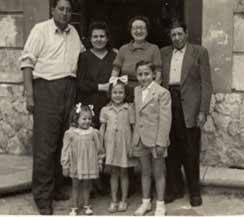
The wave of emigration from Sicily to North and South America in the early part of the twentieth century was the result of natural disasters in Sicily as well as the poor conditions which persisted as a result of policies enacted by the new Italian government established in 1870.
That year a disease attacked grape vines. In fact, in France in 1866 a small area of grapevine sickened and mysteriously died. The following year the disease spread in all directions covering a larger and larger area and advancing every year all over Europe until in 1870, it reached Sicily.
The mysterious sickness was Phylloxera, a plant louse which is very destructive to grapes and affects even the wine currently growing all over the world in a never-ending battle. These events were a ruin for many Sicilian farmers. as a result, many emigrated to Morocco and some to the Americas.
In 1887, a cholera outbreak affected the island and the big cities, in particular, suffered a great number of fatalities. On December 8, 1908, an earthquake with a magnitude of 7.5 in Richter’s scale, shook the city of Messina, and a tsunami with 40-foot waves struck the coastal town, wreaking havoc. 90% of the town was destroyed, and 80,000 of the 140,000 residents perished. The Sicilians, who upheld the unification of Italy, were disappointed by the policies of the new government. Sicily was heavily taxed and an eight-year military draft was imposed. Because of the policies of the central government and of the trade wars with France and other European countries, the agricultural products could not be traded.
These situations created unrest and discontent. Farmers and workers were unemployed and could not provide for their families. Many felt that the only way to survive was to immigrate to the Americas.
In 1908, over two hundred thousand Sicilians left their homes bound for the Americas. Half of them went to the U.S.A.
Settling Down
This first wave of Sicilians to arrive in the States was not received too kindly by the established communities who regarded them as inferior.
The old antagonism between the northern and southern Italians was carried on in the new country. Sicilian immigrants were given the shabbiest jobs and treated with distrust. The American considered Sicilians to be grimy, dishonest and revolutionary.
The new arrivals established themselves in areas where other Sicilian immigrants had already settled. In these communities, they were better able to communicate, received assistance in finding work and most importantly, they could be among cose nostre or our own people.
Many of the new immigrants, who sailed from Palermo, made their homes in New York.
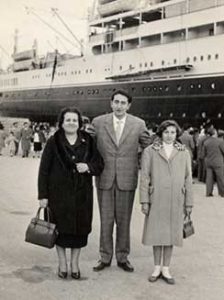
Some settled in Manhattan, some in Brooklyn and others still to small Sicilian communities in New Jersey. The fishermen from Trapani and other small Sicilian towns moved to Boston, Gloucester and other fishing centers. Many went to live in Chicago where the previous generation of Sicilian immigrants were residing. Others who were farm workers settled in Wisconsin and in other mid-western states that already had established Sicilian communities. Sicilians, who arrived in Philadelphia, spread to the neighboring states as farmers, miners and laborers. Those who arrived in Louisiana established a large Sicilian community in New Orleans and the surrounding area. Most of the farm workers moved to Texas and California.
La Famiglia
As was the case with most groups of new immigrants, the Sicilians were faced with antagonism and dislike wherever they settled. The American dream became a nightmare. They were regarded with suspicion by the people in their new country and in turn, they distrusted the American establishment. The Catholic churches were overseen by priests who did not speak Italian or Sicilian and who treated the new immigrants with contempt and disinterest. Because of this, the immigrants limited their relationships with non-Sicilians. They only interacted with “outsiders” if it pertained to basic needs, work and shopping. To protect themselves from their environment, they took refuge in their family. It was here that their native language was spoken, where they were treated with respect and where the daily problems could be discussed with ease and at times resolved.
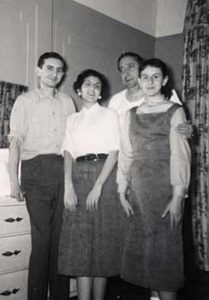
The family, which ultimately came to include relatives and close friends, became of utmost importance. They celebrated holidays, births, weddings, traditions and feasts together. The family was the unit where all members were shielded from the hostilities and aggressions of the outside world.
Usually, the oldest and hopefully wisest member was charged with providing solutions to problems and resolving issues within the family or with outsiders.
The Women
Women played a significant, albeit silent and seldom acknowledged function. They often advised their husbands and often influenced their decisions. Women also worked outside the home, providing additional income for the family. However, their most important role was caring for the family, including the children’s education, upkeep of the house, preparation of meals and, most importantly, keeping the family together.
Dinner time was family time and il pranzo consumed every day, became a ritual that would bring the family together to enjoy each other’s company, exchange ideas and talk about the day’s events.
Growing Pains
For the new immigrants, the concept of family was different from that of feudal times in Sicily. Then, a family was tied to their land and had no hope for a better future, only a daily struggle for enough food and a roof over their heads. The new model was an entity made of many families, united to create a strong front to defend, help and give comfort. The bias that existed toward the Sicilians resulted in a struggle with often severely negative results. On many occasions, Sicilians were lynched in Louisiana, killed or beaten by gangsters of other nationalities, mocked and insulted, denied work and rejected with violence.
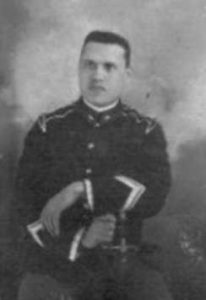
These explosive circumstances created an environment which caused individual families to arm themselves in order to protect its members from this aggressive and lawless society.
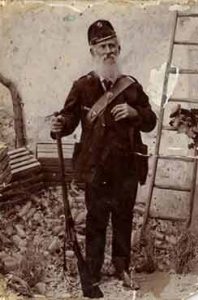
When these threats dissipated, so did the need to be armed. The process of assimilation resumed. Some of the families engaged in direct confrontation with the gangs of other ethnic groups, which caused few Sicilian families to become illegal entities, some of which are still in existence today. These organizations represent a small percentage of all criminal organizations existing in the U.S.A. and they are a small fraction of the Sicilians and Sicilian descendants living in the United States today.
Sicilians In America Today
With time, Sicilians gained better jobs, prosperity and social recognition. Their children went to the best colleges and universities, and became part of the “melting pot.”
Finally, the contributions made by Sicilians in America can be found in all areas of American life from the Jesuits Missionaries in California in the seventeenth century to a contender for the White House in 2007. Sicilians have contributed to this great nation as much as any other ethnic faction.
American-Sicilians have distinguished themselves in the areas of business, industry and government, in economics, law, education, architecture, science, the arts, entertainment, sports and of course, food.
The list that follows was retrieved from www.Wikipedia.org and names the most famous American-Sicilians from modern times.
In my lifetime I have seen on television, read about or met many of the people on the list. They made a pleasant and positive contribution to our lives and gave me a reason to be proud to be Sicilian.
To those American-Sicilians who are not listed, the professionals, business people and workers who have been and are continuously contributing to the betterment of our community we express our gratitude. To those who with their sacrifices made it possible for us to live in a better world, we give our thanks and admiration.
List of Sicilian Americans
Go to:
List of Sicilian-Americans for an added directory of known personalities of Sicilian descent.
Also go to:
People of Sicilian descent which is an index of many famous and well-known names.
- Sicilian Appetizers
- Sicilian Delicacies
- Baked Delicacies
- Sicilian Pasta Recipes
- Traditional Sicilian Pasta
- Meatless Pasta Recipes
- Legumes and Vegetables Pastas
- Rice Recipes
- Sauces and Condiments
- Meat Recipes
- Seafood Recipes
- Egg Recipes
- Sicilian Salads
- Vegetable Recipes
- Sicilian Desserts
- Wines and Rosolio
- Festino – St. Rosalie's Feast
- Christmas – Natale
- Easter – Pasqua
- Saint Joseph Table
- Recipes of the Italian Regions
- About the Italian Regions
